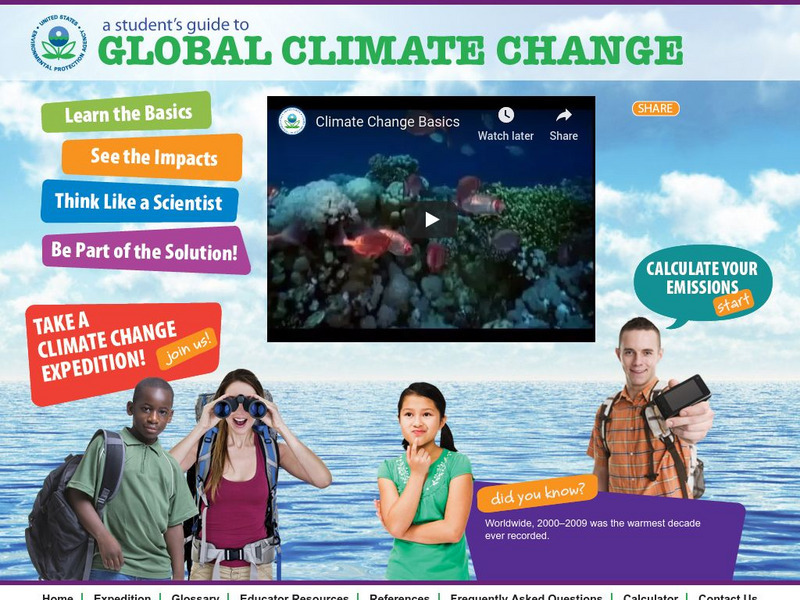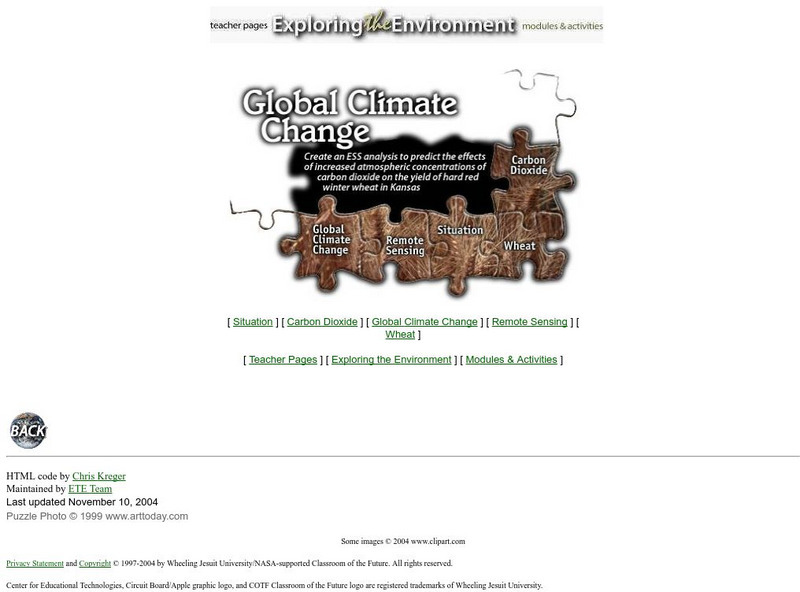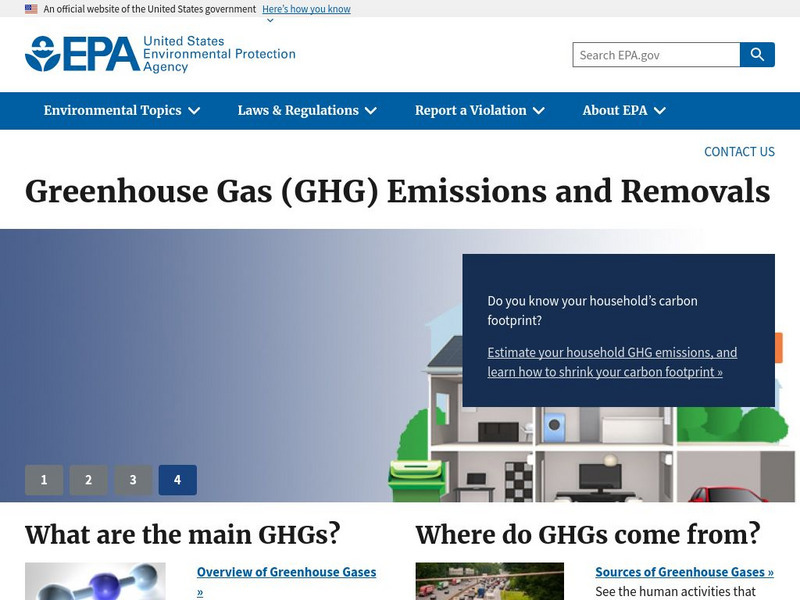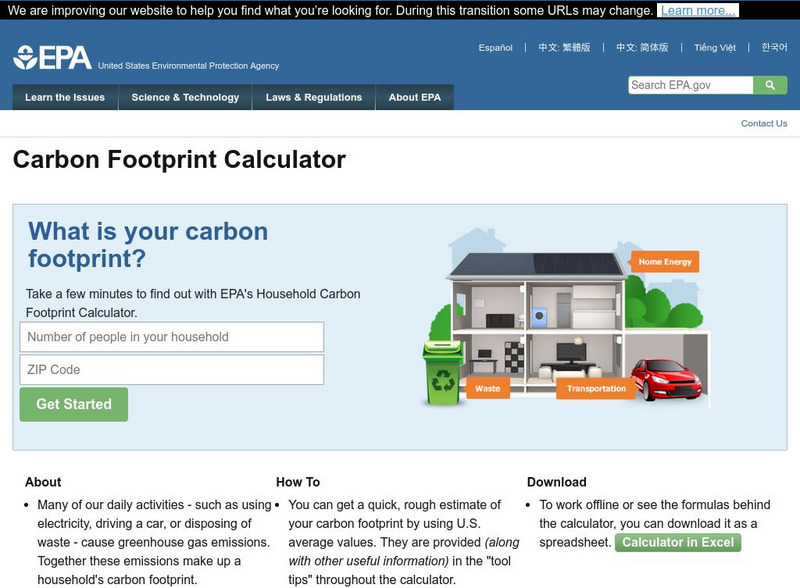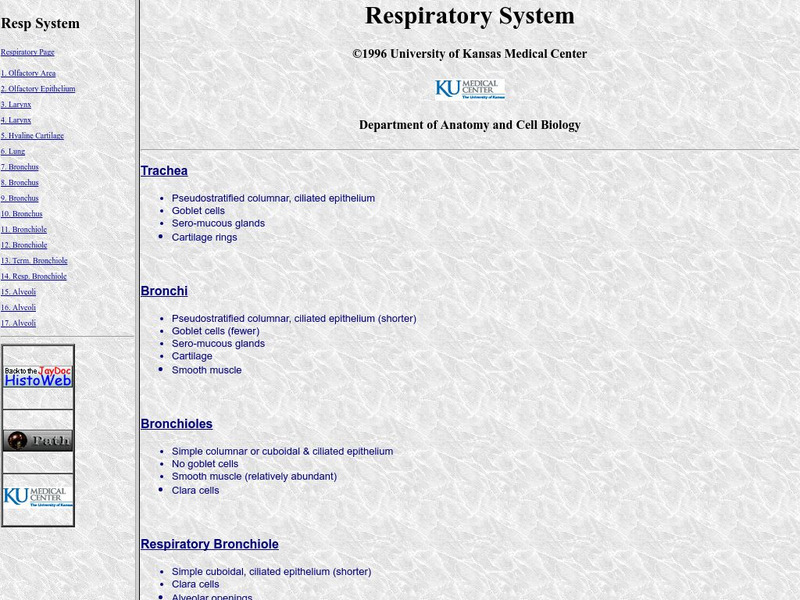University of California
Organic Chemistry Page: A Brief Tutorial on Drawing Lewis Dot Structures
An excellent lesson on writing Lewis structures. Examples shown include ammonium ion, carbon dioxide and the carbonate ion.
King's Centre for Visualization in Science
Explaining Climate Change: Lesson 6: Greenhouse Gases: A Closer Look
This is the sixth lesson in a series of learning modules on the topic of climate change. It takes a look at the different important greenhouse gases in our atmosphere and some of the ways in which humanity is affecting the atmospheric...
PBS
Pbs Learning Media: Global Warming: Graphs Tell the Story
Examine these graphs from the NOVA/ FRONTLINE Web site to see dramatic increases in the temperature of Earth's surface and greenhouse gases in the atmosphere.
Other
Water on the Web
Water on the Web (WOW) is an advanced site allowing students to actively participate in data analysis from real research sites. Lesson plans on a range of topics are provided. There is also a tutorial for using Excel to graph WOW data.
US Environmental Protection Agency
Epa: A Student's Guide to Global Climate Change
The signs of global climate change are becoming more and more evident. The EPA provides an excellent guide for students that acquaints them with the basic causes, effects on people and the environment, and solutions that they can engage...
Other
Gfdl: Temperature (F) Response Due to Increased Atmospheric Co2
An animated model of the Earth from the Geophysical Fluid Dynamics Laboratory showing how global temperatures increased from 1870 to 2100 due to rising amounts of carbon dioxide in the atmosphere.
PBS
Pbs Learning Media: Photosynthesis
This video segment from Interactive NOVA: "Earth" looks at photosynthesis, the chemical process plants use to make their own food.
Virginia Tech
Virginia Polytechnic Institute: Greenhouse Dinosaur Extinction Theory
This comprehensive page discusses the Asteroid Impact vs. Volcano-Greenhouse dinosaur extinction debate. It was written by paleontologist, professor, and scientist Dr. Dewey McLean.
TED Talks
Ted: Ted Ed: The Carbon Cycle
Video talks about the carbon cycle and uses a computer as a metaphor to show how the cycle can be disrupted by climate change. [3:55] Includes a short quiz and a list of additional resources to explore.
Center for Educational Technologies
Exploring the Environment: Global Climate Change
This tutorial looks at carbon dioxide in the atmosphere and how changes can impact wheat production in Kansas.
PBS
Pbs Learning Media: Global Warming: Carbon Dioxide and the Greenhouse Effect
This video segment adapted from NOVA/FRONTLINE demonstrates the physical property of carbon dioxide that causes the greenhouse effect. Includes background reading and discussion questions. [2:26]
Science Museum, London
Science Museum: Climate Science Info Zone
Media-rich interactive explores Earth's climate, investigating what might be causing the climate to change and how to prepare for it in the future.
Michigan Reach Out
Michigan Reach Out: Do Plants Need Sunlight?
Do plants need sunlight? What happens to plants if they do not get sunlight? Students will act like scientists in order to answer these questions. A scientist takes questions like this and then conducts an experiment to see what really...
Nature Research
Nature Education: Energy Economics in Ecosystems
This article discusses how plants and microorganisms, until recently, have mostly controlled how much carbon dioxide is released into an ecosystem, and explains how this process works. Humans' burning of fossil fuels has upset the...
American Museum of Natural History
American Museum of Natural History: Ology: Rising Co2! What Can We Do?
With this resource, students learn how much fossil fuel emissions have increased since 1600 by exploring a graph showing carbon dioxide in our atmosphere. Then answer questions and read facts about climate change over the centuries....
American Chemical Society
Middle School Chemistry: Lesson Plans: Can Gases Dissolve in Water?
An activity through which students learn why gas is able to dissolve in water, and how heat affects the solubility of a gas in a liquid.
University Corporation for Atmospheric Research
Ucar: Plugged in to Co2
Students analyze the energy consumption of a household appliance and estimate the amount of carbon dioxide it is adding to the atmosphere each year.
PBS
Pbs: Earth Science Exploration
An earth science collection where students can explore earthquakes, volcanoes, and more natural phenomena. The collection uses videos and interactive activities to investigate our dynamic planet and earth systems.
Smithsonian Institution
Smithsonian Learning Lab: Prehistoric Climate Change and Why It Matters Today
In a instructional activity in this issue of Smithsonian in Your Classroom, students do the work of a team of paleontologists studying a time of rising carbon dioxide and rapid global warming during the Eocene epoch. By examining fossils...
Climate Literacy
Clean: Climate Feedback Loops
This is the seventh of nine lessons from a student learning module called "Visualizing and Understanding the Science of Climate Change." This lesson addresses climate feedback loops and how these loops help drive and regulate Earth's...
University Corporation for Atmospheric Research
Ucar: Project Learn: Where in the World Is Carbon Dioxide?
In this lesson on greenhouse gas, students conduct experiments to detect and collect carbon dioxide, then use titration to determine how much carbon dioxide is present in an indicator solution.
US Environmental Protection Agency
Epa: Greenhouse Gas (Ghg) Emissions
Earth's atmosphere contains greenhouse gases. Find out what these gases are and where they come from. Also link to other information about how greenhouse gases contribute to climate change.
US Environmental Protection Agency
Epa: Household Carbon Footprint Calculator
Enter your household energy data to find out your family's total carbon footprint. Explore some actions to take to reduce your carbon emissions, and then find out your estimated savings once you take those steps.
University of Kansas Medical Center
University of Kansas Medical Center: Respiratory System
What do you know about the respiratory system? Check out this site to learn more about this fascinating body system. This resource features slides of the different parts of this system.




